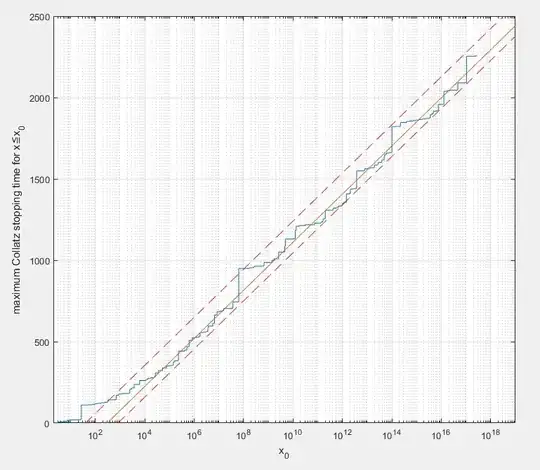The maximum stopping times for the Collatz $3x+1$ function have been computed up to about $x = 10^{18}$, given at $3x+1$ delay records. Plotting those results gives this:
A more interesting presentation is given on a semi-log plot:
It can be seen that the stopping time tends to a line as $x$ increases, and is confined to relatively narrow bounds. If anything, it seems to be tending to slightly narrower bounds as $x$ increases. Using a best fit of the upper part of the curve gives this equation:
$S=147.8\log_{10}x-366.9$
where $S$ is the maximum stopping time.
My question is, is there a (perhaps statistical) argument for why the maximum stopping time would tend to follow this line?
A further question is what is the likelihood that the relation could hold at higher powers of 10. For example, $x_0=10^{200}$ gives a predicted maximum stopping time for $x<x_0$ of about 29,194.

